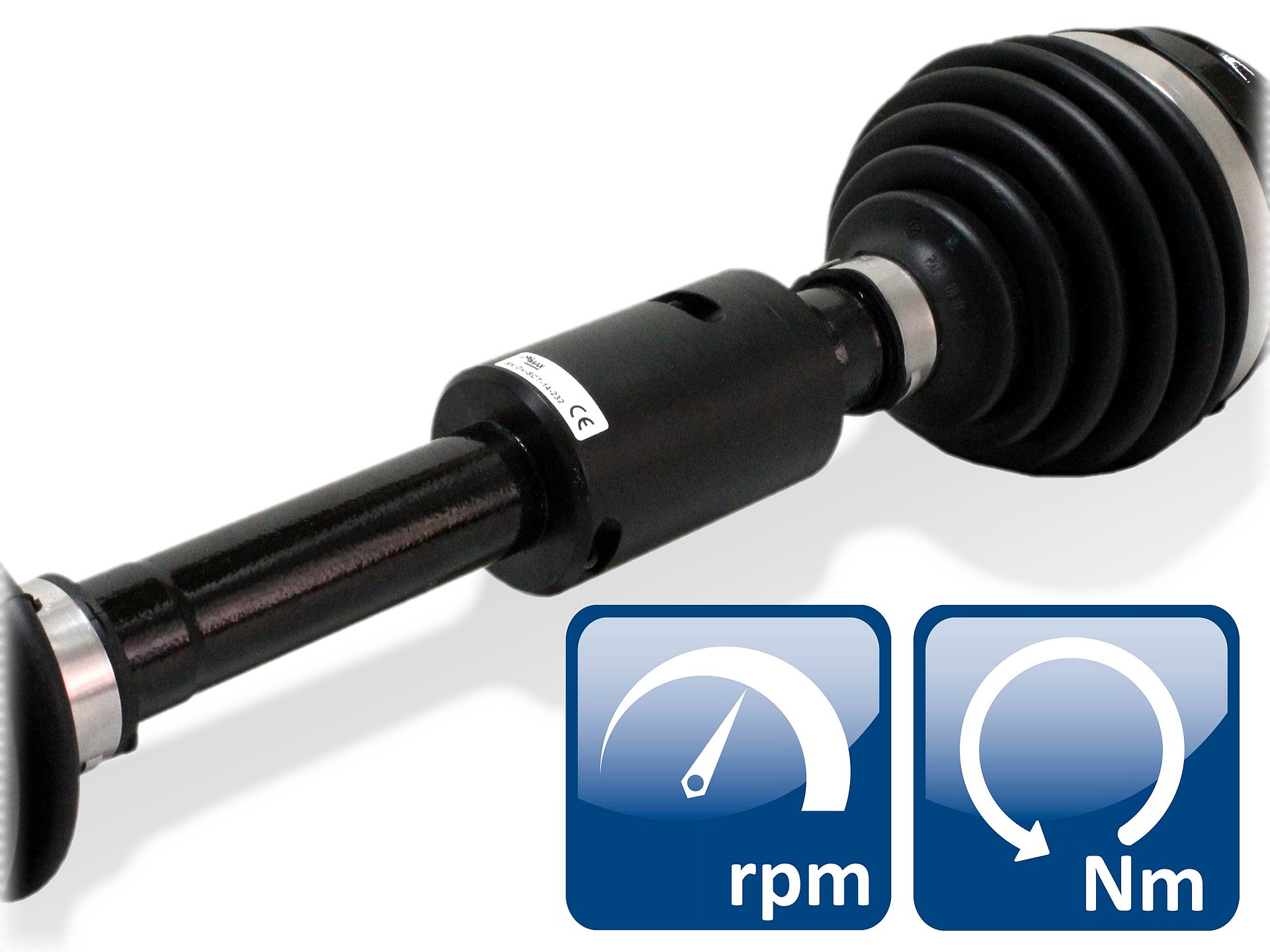Mechanical power measurements on drive systems
CAEMAX Technology GmbH has developed a new sensor system for making wireless power measurements on mobile equipment. The system synchronously records the speed and the torque acting on the shaft and calculates the power. Because of its modular design, it can be easily integrated into existing systems.
Power measurements are essential to the development and optimization of drive systems. This applies to many areas: The automotive industry is striving to reduce CO2 emissions from its vehicles. In addition to classic combustion engines, they are also developing electric and hybrid systems. In many branches of industry, electric motors power machines of all kinds. All these components are expected to become even more efficient. The overall efficiency of a drive system is a decisive parameter and can be determined with the aid of power measurements. But it is not always enough to look at overall efficiency – it is often also necessary to know how the power is distributed to individual components. This is the only way to develop intelligent systems that guarantee maximum efficiency in every driving situation.
Mechanical power measurements typically measure the speed and the torque applied to a shaft at a given time. The power is then calculated as: P=2π∙n∙M, where n is the rotational speed and M the torque.
Power measurements up to now
There have long been different systems on the market for measuring both speed and torque. If one wants to determine the power with the help of such discrete systems, however, problems arise: the two signals independent of each other must be synchronized afterwards. This is only possible with some effort, which makes the system very error-prone. Mechanical installation is also time-consuming and complex.
Some integrated systems that have been on the market for some time also have limitations that should not be ignored. For example, the shaft to be measured often has to be shortened in order to install the sensor. Another alternative is to replace the shaft completely with a new version equipped with a sensor. With these systems, the original component is not preserved, which inevitably leads to a change in the component behavior. In addition, many systems for measuring the rotation rate require a stator, which must be attached to the chassis, for example. Some systems are not suitable for mobile operation, but only allow stationary measurements, e.g., on the test bench. They are often heavy and mechanical installation is often complex.
New measurement system from CAEMAX
CAEMAX Technology has now developed an integrated measurement system for making wireless mechanical power measurements on drive shafts that solves these problems.






